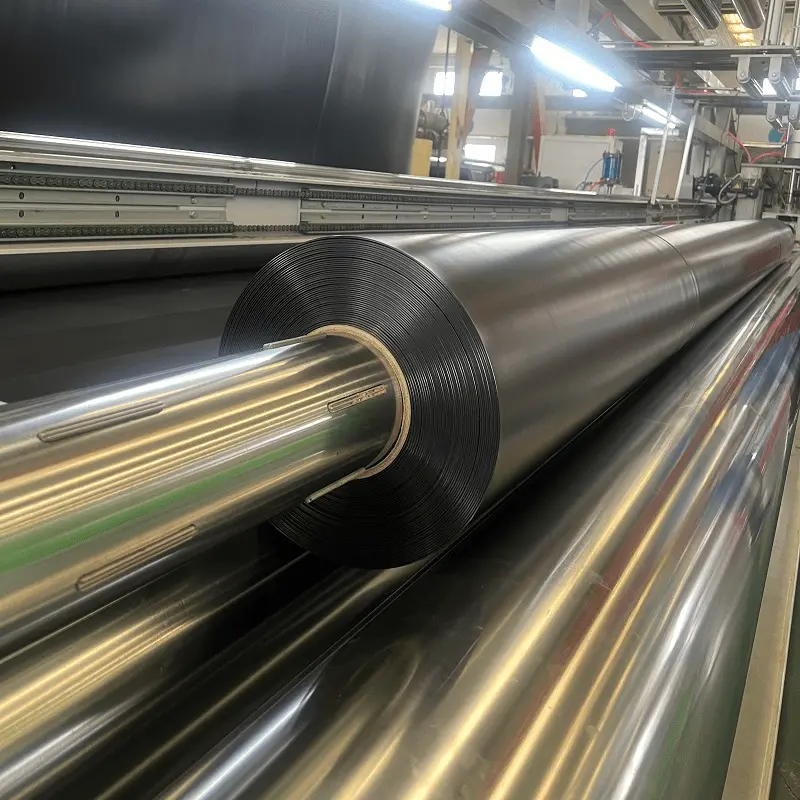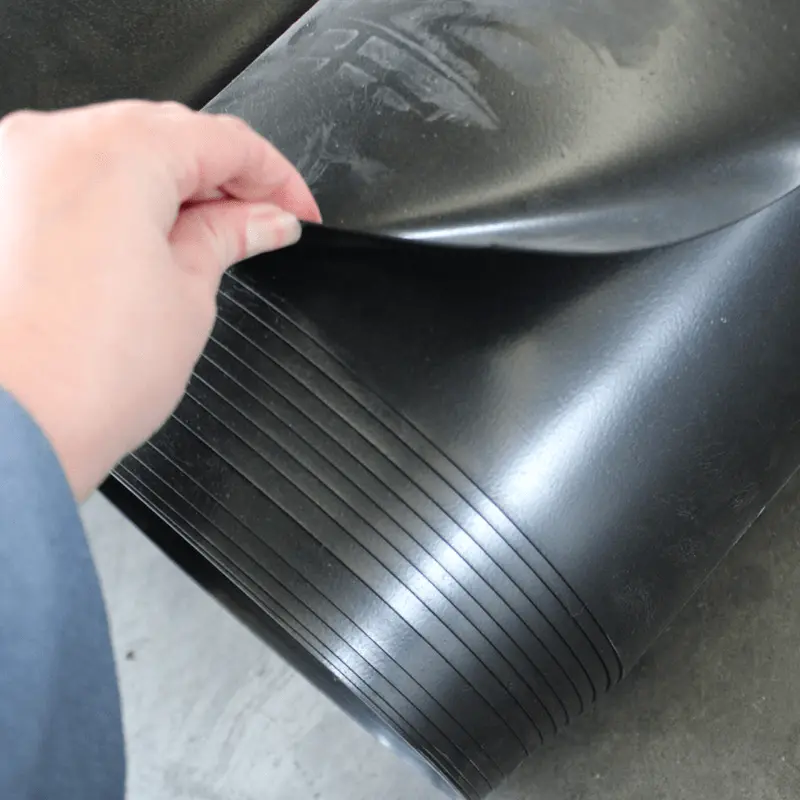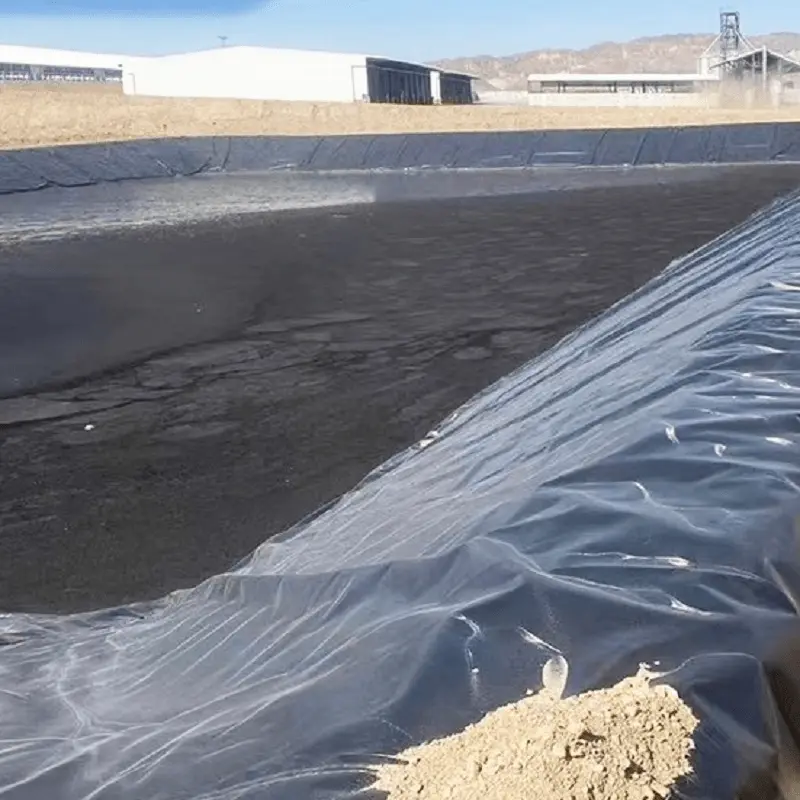1. Market Growth and Adoption Trends
HDPE geomembrane usage in Paraguay has surged due to increased investments in sanitation, mining, and agriculture. The table below outlines key growth indicators:
| Year | Annual Installation (m²) | Growth Rate (%) | Primary Applications |
|---|---|---|---|
| 2018 | 280,000 | - | Pilot landfill projects, irrigation canals |
| 2020 | 650,000 | 13.2 | Municipal waste management, aquaculture ponds |
| 2022 | 1,200,000 | 18.5 | Mining tailings, agricultural reservoirs |
| 2024* | 1,800,000 (projected) | 22.0 | Water treatment plants, industrial waste |
Source: Paraguay Ministry of Public Works and Communications (2023)
Note: Projected growth based on current infrastructure pipeline.
Key Drivers:
Regulatory Compliance: Paraguay’s updated environmental regulations (Law 5552/2018) mandate stricter controls on waste disposal and water contamination, driving demand for reliable containment solutions.
Agricultural Expansion: The country’s agro-industrial sector, particularly soybean and cattle farming, requires HDPE liners for wastewater lagoons and irrigation systems.
Mining Sector Revival: Rising global demand for minerals has revived Paraguay’s mining industry, necessitating HDPE for heap leach pads and tailings storage.
2. Environmental and Economic Advantages
HDPE geomembranes offer a cost-effective, sustainable alternative to traditional materials like clay or concrete. Their benefits include:
Leakage Prevention: Impermeable HDPE reduces groundwater contamination risks, critical in Paraguay’s karst terrain where limestone aquifers are vulnerable.
Longevity: With a lifespan of 20–30 years, HDPE minimizes replacement costs compared to shorter-lived alternatives.
Carbon Footprint Reduction: Lightweight and recyclable, HDPE liners lower transportation emissions and end-of-life disposal impacts.
Cost Comparison Analysis
| Application | HDPE Geomembrane | Traditional Materials | Savings Over 20 Years (%) |
|---|---|---|---|
| Landfill Liner | $8–12/m² | $15–20/m² | 40–50 |
| Irrigation Canal | $6–9/m² | $12–18/m² | 35–45 |
| Mining Tailings Pond | $10–14/m² | $20–30/m² | 40–60 |
Source: Paraguayan Engineering Association (2023)
3. Key Application Areas
3.1 Solid Waste Management
Paraguay’s rapidly urbanizing cities, such as Asunción and Ciudad del Este, face mounting waste management challenges. HDPE geomembranes are central to modern landfill designs:
Case Study: The Cateura Landfill (Asunción) uses 1.2 million m² of HDPE to contain 1,500 tons of daily waste, preventing leachate seepage into the Paraguay River basin.
Innovation: Textured HDPE liners enhance slope stability in hilly terrains, reducing erosion risks by 30% (Paraguay Environmental Protection Agency, 2022).
3.2 Agricultural Water Management
In Paraguay’s Chaco region, HDPE-lined reservoirs store rainwater for livestock and irrigation during dry seasons. A 2023 study found that HDPE-lined ponds reduced evaporation losses by 28% compared to unlined systems.
3.3 Mining and Industrial Uses
The country’s mining sector uses HDPE for:
Tailings Storage Facilities (TSFs): Preventing acid mine drainage in mineral processing.
Heap Leach Pads: Enhancing gold and copper extraction efficiency.
Case Study: The San Cristóbal Mine in Amambay uses HDPE liners to manage 80,000 m³ of tailings, reducing operational costs by 25% through optimized water recycling.
3.4 Aquaculture and Water Treatment
HDPE geomembranes are integral to shrimp farming ponds in Paraguay’s Alto Paraná department. Their seamless welding reduces water loss and prevents soil contamination from chemicals.
4. Challenges and Future Outlook
Despite rapid adoption, challenges persist:
Technical Expertise Gaps: Limited local training on HDPE installation and maintenance.
Supply Chain Constraints: Reliance on imported materials due to lack of domestic manufacturing.
Regulatory Enforcement: Inconsistent monitoring of geomembrane quality in remote regions.
Future Opportunities:
Public-Private Partnerships (PPPs): Collaboration between the government and international agencies to fund HDPE projects.
Circular Economy Initiatives: Promoting HDPE recycling for post-consumer applications.
Climate Resilience: Expanding HDPE use in flood control and drought mitigation infrastructure.
5. Conclusion
HDPE geomembranes have become indispensable in Paraguay’s sustainable development strategy, balancing economic growth with environmental stewardship. As the country addresses infrastructure deficits and climate change impacts, HDPE’s versatility and durability will remain critical. Policymakers, engineers, and stakeholders must collaborate to overcome current limitations, ensuring HDPE technologies contribute to Paraguay’s long-term ecological and socio-economic goals.
![]() 1.5 Double-sided smooth HDPE geomembrane.pdf
1.5 Double-sided smooth HDPE geomembrane.pdf




897.webp)
942.webp)
237.webp)